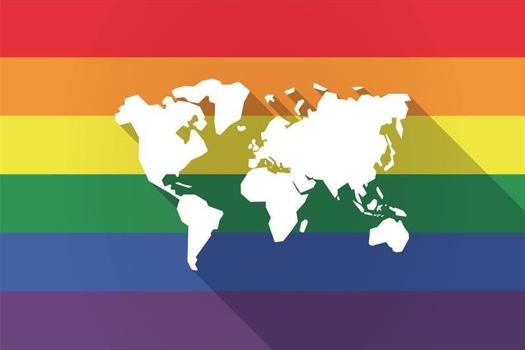Stonewall research has found over a third (35%) of LGBT staff have hidden their identity at work for fear of discrimination. More needs to be done by HR leaders to build an inclusive environment, increase support for LGBTQ+ employees and offer equitable benefits.
Looking out for your LGBT+ employees:
Is using umbrella terms such as BAME, LGBT+ and disabled hindering inclusion efforts?
The silent B in LGBT: Bisexual people in the workplace
True company-wide acceptance starts with everyone fully understanding that despite our differences, it’s our shared experiences and common connections that bring us together – and the things that unite us are always stronger than those that divide us.
Talking about diversity is inherently emotional and can be complex. However, doing the work and research to understand basic facts about any community can make any interaction more inclusive and meaningful. HR leaders should start with the basics by reviewing company policies for LGBT+ inclusion.
Striving to create a separate policy for LGBT+ inclusion is a clear way to show your commitment to tackling homophobia and transphobia in the workplace. In addition, all other policies should aim to be LGBT+ inclusive, this should include policies on parental leave, adoption, and pensions.
HR leaders should also implement LGBT+ specific training as part of their overall equity, inclusion and belonging training strategy. Training is a key component to enlightening all staff to LGBT+ issues and reinforcing company policies to ensuring they are understood by all.
Fostering a gender-neutral environment
Establishing an inclusive culture within a business also includes ensuring a gender-neutral environment. HR leaders should avoid gendered language that may trigger unconscious biases in both the hiring team and the potential candidate.
Removing gendered language will allow the HR team to collect a gender-diverse pool of candidates, which promotes equal opportunity hiring practices. As part of reviewing diversity brand equity, companies should make their commitment to gender inclusivity apparent on their website and career portals.
According to a survey by Glassdoor, 76% of employees and job-seekers report a diverse workforce is an important factor when evaluating companies and job offers. An authentic commitment to inclusivity is a requirement to appeal to top talent.
Adding pronouns in email signatures on social media profiles and stating them in meetings has become much more prevalent. Using ‘they’ instead of ‘he/she’ in contracts and other company documentation is a step toward company-wide diversity, acceptance, and inclusion, as is monitoring ongoing communications for gender-neutrality.
HR leaders should encourage all employees to take full advantage of these updates to further promote company-wide diversity. Clearly stating your pronouns has become a way for everyone to normalise not assuming someone’s gender.
When everyone gets into the habit of stating their pronouns, this helps trans and non-binary people feel more comfortable to state theirs.
Finally, creating gender-neutral bathroom options wherever possible is an appreciated action. Single unisex bathrooms are more inclusive for non-binary people, who don’t identify within the gender binary that single-sex toilets uphold.
Back to basics: it all starts with recruitment
HR teams must show their commitment as LGBT+ allies at the beginning of every employee’s journey – starting at the recruitment process. Though some organisations are not discriminating actively, they may be discriminating implicitly.
At SmartRecruiters we are committed to minimising LGBT+ discrimination in the recruiting process. That means using our full power as individuals, as an employer and as a provider to influence wholesale change and to help organisations achieve true diversity hiring outcomes.
We have created a Diversity Hiring Toolkit that allows companies the ability to take our free Diversity Hiring Assessment. Upon completion of the assessment, organisations receive a customised report that serves as a blueprint on how to improve diversity hiring outcomes with tailored guidance and actionable steps.
Only by evaluating, reassessing and driving change can organisations generate real progress toward building a diverse workforce, supportive LGBTQ+ workplace establishing an inclusive environment.
Rocki Howard is chief diversity officer at SmartRecruiters
If you have a pressing D&I problem you can't get to the bottom of, send in your query here where it will be be answered by our resident D&I specialist Huma Qazi in the next issue of HR magazine.









